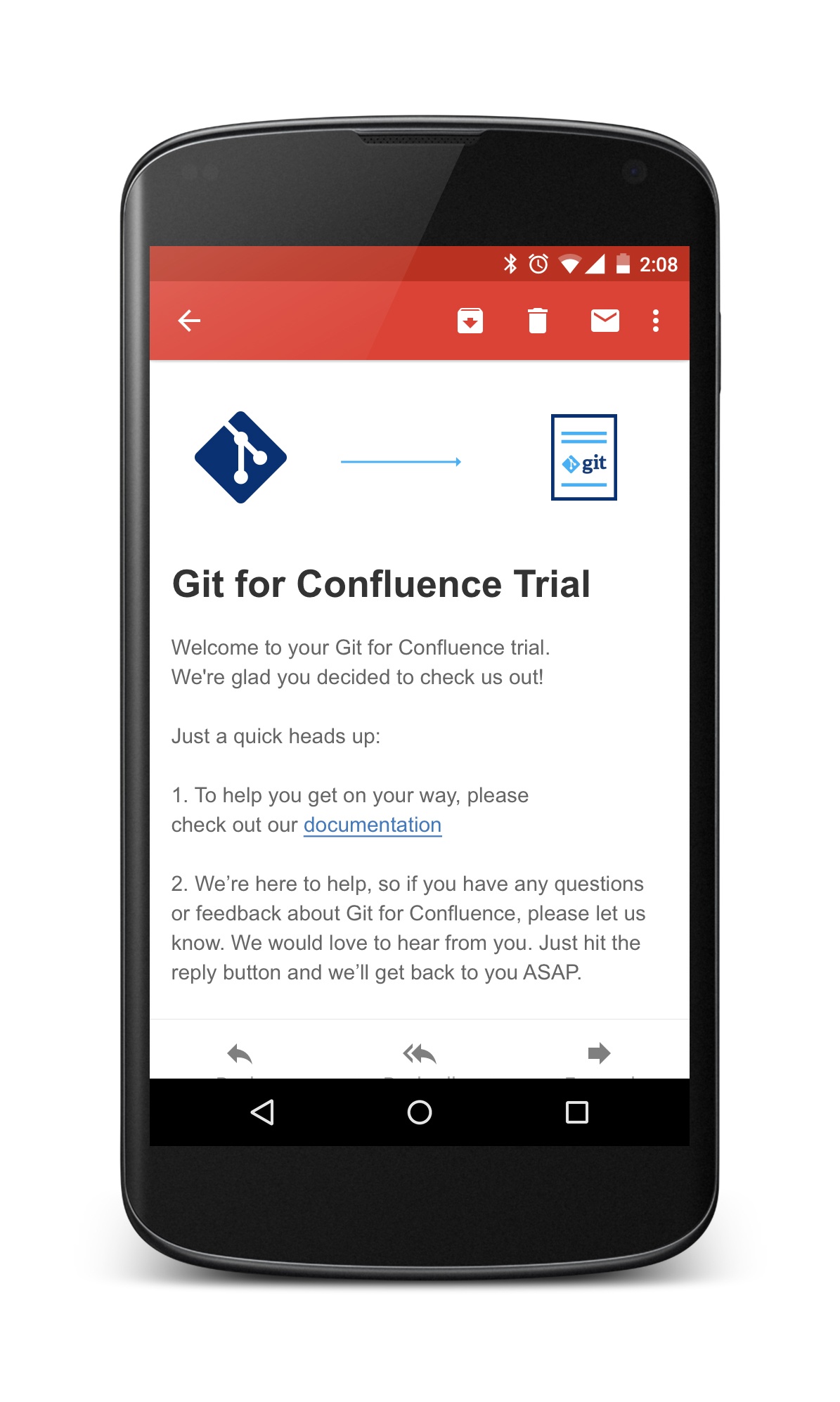Quality - The Team and the Details
Door Barri Jansen / okt 2012 / 1 Min

Door Gert-Jan van de Streek / / 3 min

Most of our Atlassian add-ons started out of frustration. They solve problems that we have internally, or they fill blanks in the Atlassian products. Preparing these add-ons for others to use came as an afterthought. Finding a way to sell them came... after that. Little did we know about marketing and such, but we took it as a challenge and we are learning about what works and what does not. Here's the story about our drip feed.
A drip feed is a series of prewritten messages, mostly emails, that are sent to prospects over time. The timing of the messages is pre-determined and the messages are typically automated.
That leaves us with the question: why would we want to bother people with a series of emails? For us the goal is to help them through the long sales-cycle that is involved with the Atlassian market place: there is a long time between the request for a trial license and the time that trial ends. This period takes at least 30 days, during which we just want to show up. This is the least we can do. As we expose people to our products, we have the obligation to help them understand and use those products.
Also part of the reason we started drip feeding was that we wanted to talk to people. The goal was never to send that drip feed, no, we wanted to listen to the reponse on that drip feed. A conversation is worth a lot, as you learn what your customers are looking for in contrast to what they find.
When we first started emailing evaluators, we used canned responses in a shared gmail account. If you are not reaching out to your prospects just yet, I would very much encourage you to start that way. Sounds like work? It is. Do it anyways. If you can't spare the time, start at least one drip feed a week. That is enough to start learning.
When the traffic of your drip feed increases, you will soon find out that you need better tooling.
As a drip feed is nothing more than a simple workflow, JIRA comes to mind. It was easy to set up the workflow and use an agile board to give a quick overview of the running feeds:
what you see here is a simple board, with the following columns:
To Do: this is where new evaluations show up. We have a piece of middleware running that polls the market place for new evaluations and creates a JIRA issue when it finds one. A subscription to a filter notifies us of the fact that a new evaluation was started. Issues in this column can be dragged to the drip one column for the first drip.
Drip one / two / three: when an issue is dragged into one of the drip columns, the corresponding email for this step in the drip feed gets sent. I will explain how this works in a minute, stay with me.
You may have noticed that we do not have a fully automated drip feed. We are not quite ready for that yet, we are still learning about what we get from the market place. Sometimes there are duplicates, or other edge cases we don't want to respond to. Sometimes we recognize an existing customer and want to send a more personal message. This is where the manual column comes in:
Manual: This is where exceptions are parked. Issues that we don't want to push through the drip feed.
The board also has a seperate swimlane for conversations. If a prospect responds to the drip feed, the issue is automatically shown in the conversations lane.
The issues that are colored red indicate that it is time for the next drip.
We currently use a 3 step drip feed with the following schedule:
Implement a drip feed and increase your sales - It's surprisingly easy!
I promised I would explain how the actual emails get sent. We are using Mandrill, an email infrastructure service, from the makers of MailChimp.
With Mandrill you can create templates with dynamic content (we are merging fields from the issue in JIRA to the content). Mandrill allows you to track how many times an Email is opened, how many people actually clicked on a link and it offers options for experimenting with A/B testing. But that's not all, Mandrill offers many, many features. Check out in the Mandrill feature list.
Here is an example of one of the (responsive) templates that we send from Mandrill:

Mandrill is free for up until 1200 emails per month, that is 300 trials if you implement a 4 step drip feed.
What happened when we started drip feeding? We all got rich and we lived happily ever after! Not really, but we saw a good increase in the sales and we learned a lot by talking to our customers.
All of the Mandrill goodness is available as an add-on. If you are, like us, an Atlassian Expert and want to implement a drip feed, let me know and I will send you a promotion code that will let you use the add-on for free.

| Atlassian
Door Gert-Jan van de Streek / okt 2024
Dan denken we dat dit ook wat voor jou is.